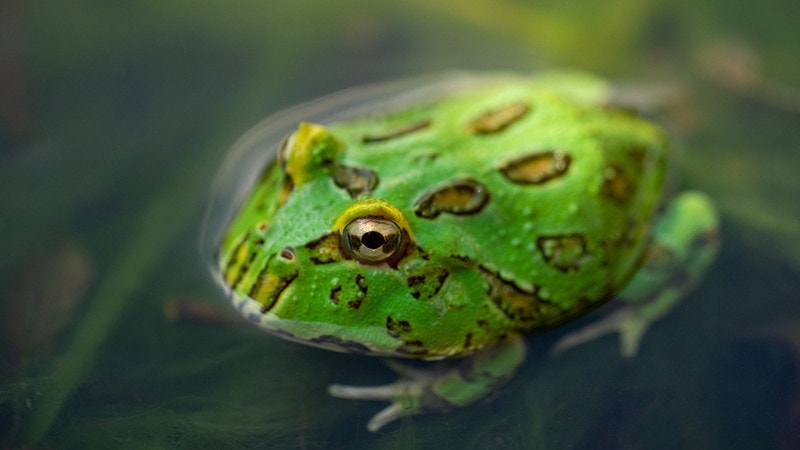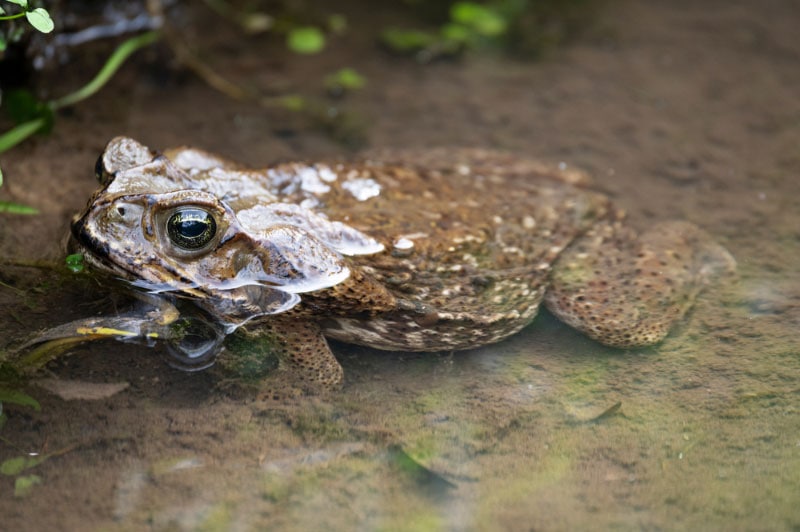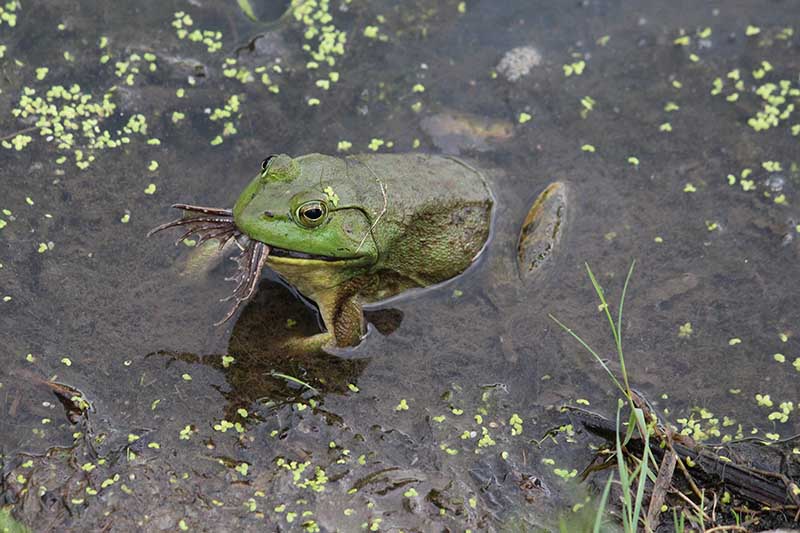18 Types of Pet Frogs (With Pictures)
Updated on
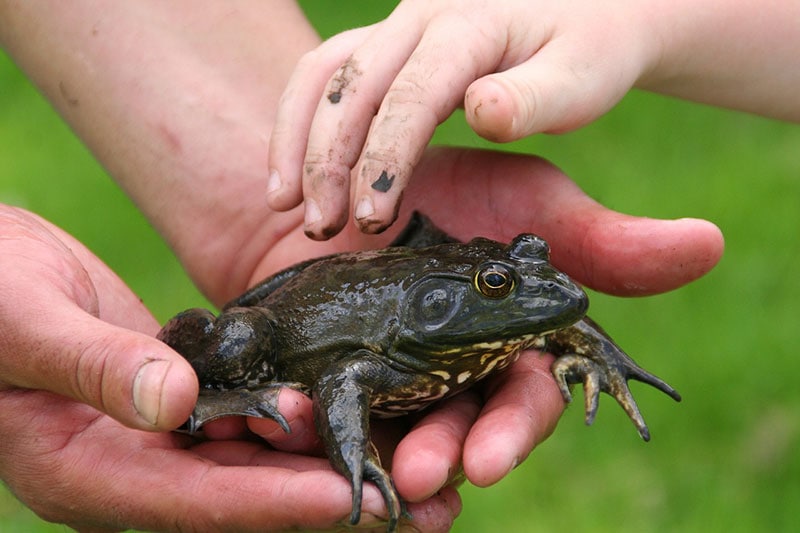
If your idea of the perfect pet has no fur and doesn’t require housetraining, why not consider a frog? Most frogs are hand-off pets that can be fun to observe and typically don’t require intense daily care. Although most are too delicate to handle regularly, they have vibrant colors and unique habits. Here are 18 types of pet frogs for you to consider.

The 18 Types of Pet Frogs
1. Argentine Horned Frog
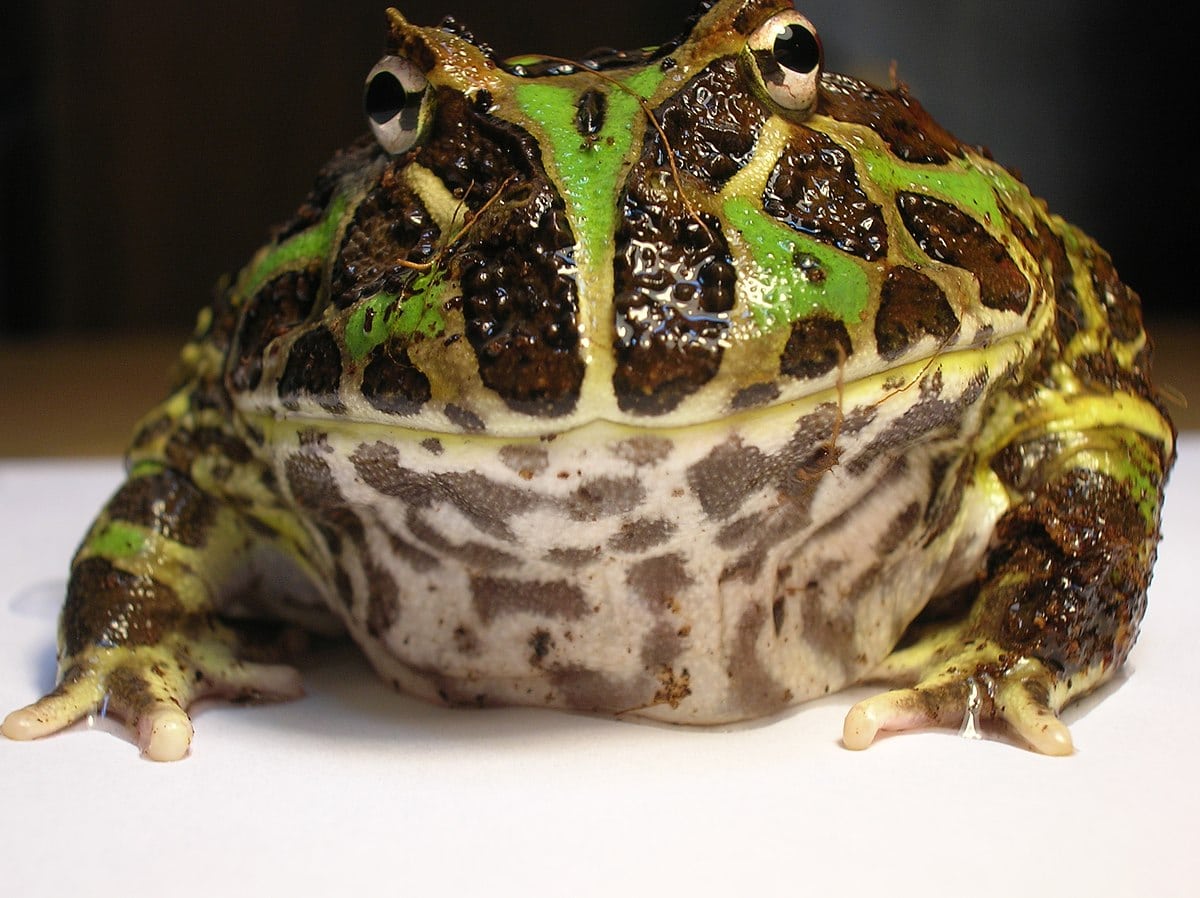
| Scientific name: | Ceratophyrs ornata |
| Size: | 4.5 – 6.5 inches long |
Also called the Pacman frog due to its jumbo-sized mouth, this South American species is one of the most popular pet amphibians. The Argentine Horned frog adapts easily to life in captivity and is a good choice for beginner frog keepers because they don’t require a complicated habitat and care. The frog comes in a variety of colors or morphs. They are one of the largest pet frog species and can have a bit of an attitude. Be careful when handling this frog as they’ve been known to bite.
2. Gray Tree Frog
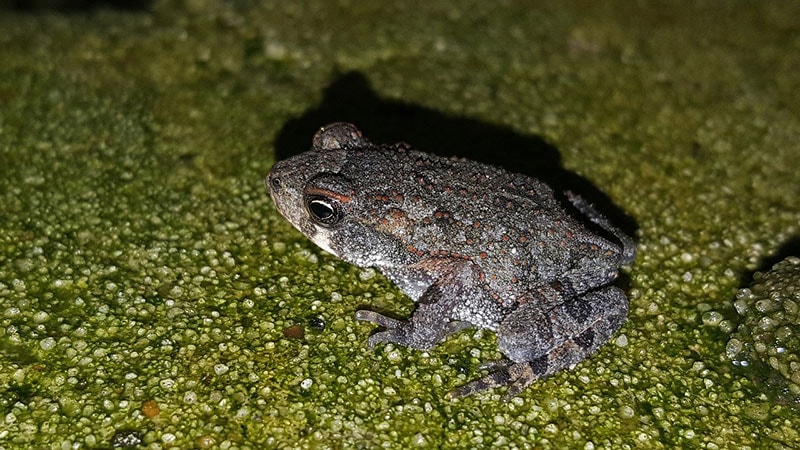
| Scientific name: | Hyla versicolor |
| Size: | 1.25 – 2.25 inches long |
The Gray Tree Frog is native to North America, and its habitat is located throughout the eastern United States and Canada. Although Gray Tree Frogs are common in the wild, you should buy this species from a breeder to protect the native populations that serve important roles in their ecosystems. Gray Tree Frogs are small, warty creatures that enjoy climbing. They are fast and easily stressed by handling. Although the Gray Tree Frog doesn’t need a large habitat, it will appreciate high platforms, so it can climb like it would in the wild.
3. Poison Dart Frog
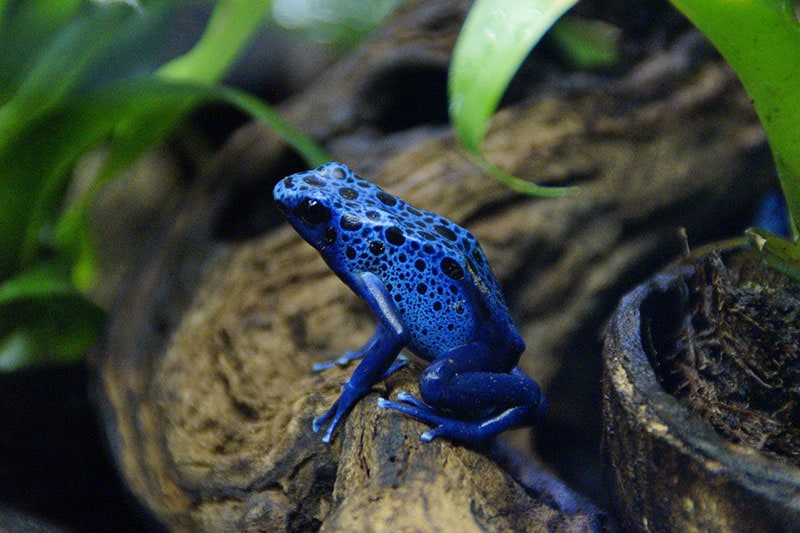
| Scientific name: | Dendrobatidae |
| Size: | 0.75 – 1.5 inches long |
Don’t let the name scare you; Poison Dart frogs are one of the most entertaining and beautiful pet species you’ll find. The frogs mix flashy yellow, green, blue, and red markings with black. Native to Central and South American rainforests, the Poison Dart Frog needs a warm, moist habitat. They are tiny, active frogs who normally live on the ground. These pet frogs are another good choice for beginners because they don’t need a large enclosure.
4. Red-Eyed Tree Frog
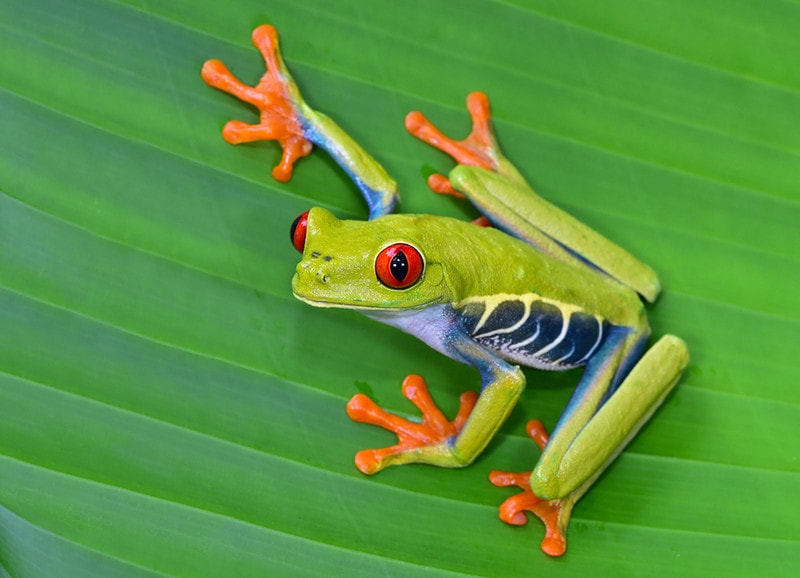
| Scientific name: | Agalychnis callidryas |
| Size: | 1.5 – 2.75 inches long |
The Red-Eyed Tree Frog is one of the most recognized pet species. They are bright green with huge red eyes and orange feet and need a larger enclosure with high walls to be most comfortable. Red-Eyed Tree Frogs are a tropical species and can be very sensitive to the conditions in their enclosure. Outside of their specific environmental requirements, these frogs are not difficult to care for and are quite a sight, thanks to their bold colors.
5. White’s Tree Frog
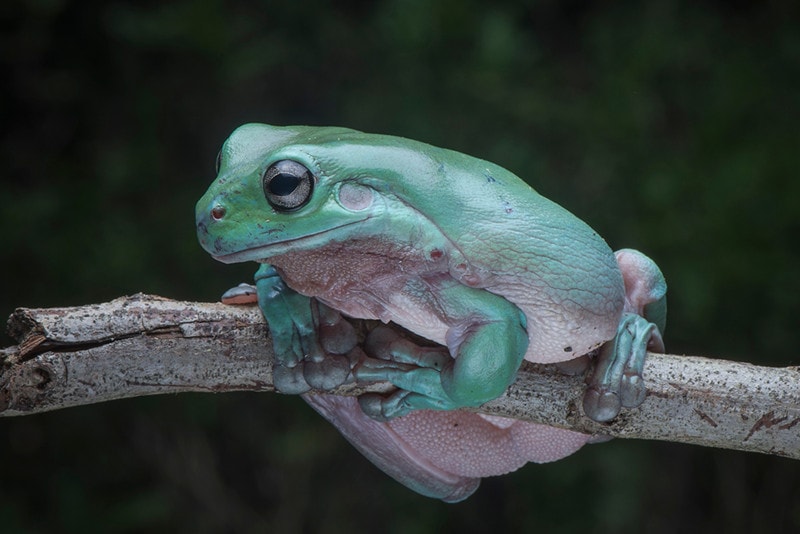
| Scientific name: | Litoria caerulea |
| Size: | 3 – 4.5 inches long |
The White’s Tree Frog is also called the Australian Green Tree Frog or Dumpy Frog. They are one of the most common and easily purchased pet frogs because they adapt well to captivity. Naturally calm and tame, the White’s Tree Frog is one of the best choices for beginner frog keepers, especially kids. Larger than many species, these frogs are typically silver-green with white bellies. Their size and calm nature make them one of the pet frogs most willing to be handled.
6. Amazon Milk Frog
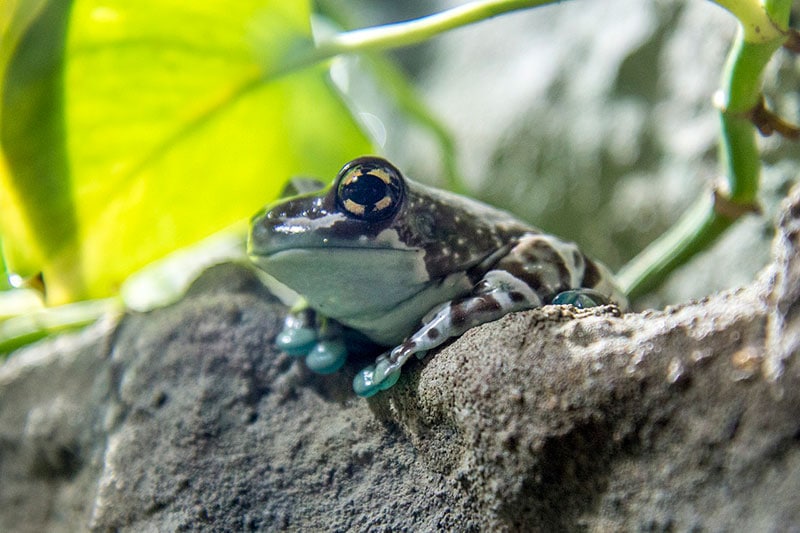
| Scientific name: | Trachycephalus resinifictrix |
| Size: | 3 – 3.5 inches long |
Amazon Milk Frogs are a tree species named after the white liquid they secrete to protect themselves from predators. They are mint green with brown markings and large feet for climbing. They can be kept in groups and are popular because they are easily bred in captivity.
However, despite their larger size, these frogs don’t like being handled. Also called the Mission Golden-Eyed Frog, this species is native to tropical rainforests in Northern South America. They rarely leave their tree homes, so you’ll need to ensure they have vertical space in their habitat.
7. American Bullfrog
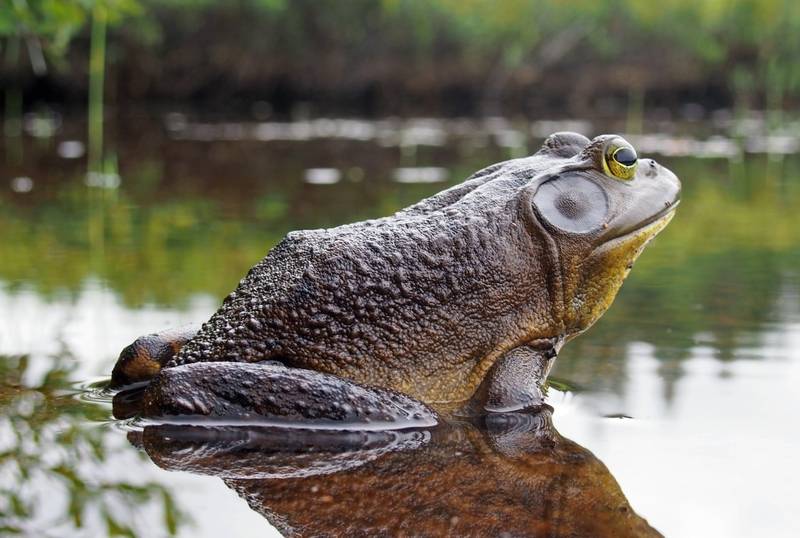
| Scientific name: | Lithobates catesbeianus |
| Size: | 8 inches long |
As one of the biggest native frogs in America, the American Bullfrog will be familiar to anyone living near a creek or pond. These giant frogs are commonly heard croaking, especially in the evening. However, they’re considered an invasive species in some states. American bullfrogs are amazing swimmers and will need access to water in their habitat. Because of their size, you’ll need enough room for a large enclosure if you keep an American Bullfrog as a pet. Although you can easily find one of these frogs in the wild, they don’t adapt well to captivity. Stick with purchasing a captive-bred American Bullfrog instead.
8. African Dwarf Frog
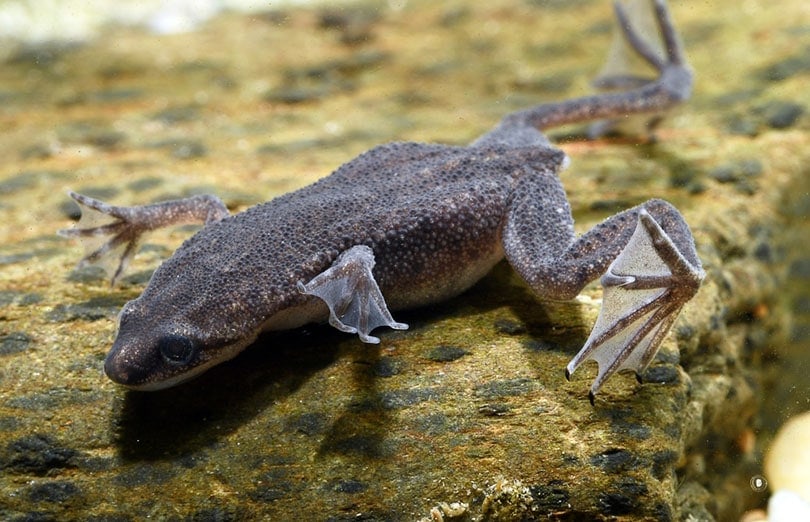
| Scientific name: | Hymenochirus curtipes |
| Size: | 2 – 3 inches long |
African Dwarf Frogs are an almost entirely aquatic species. Unlike most pet frogs on our list, they should be kept in an aquarium, but they need space to come to the surface to breathe. The African dwarf frog can be kept with compatible fish in a mixed aquatic environment. Captive-bred frogs are cheap and easy to find for sale, and the African Dwarf Frog is easy to care for, which makes them a good choice for beginner frog keepers.
9. Tomato Frog

| Scientific name: | Dyscophus guineti |
| Size: | 2.5 – 3.5 inches long |
The Tomato Frog is native to Madagascar, and in the wild, they live in various habitats. This adaptability has also allowed them to transition to life in captivity easily. With their bold red-orange color, it’s easy to see where these frogs get their name! Tomato Frogs are a popular pet species due to their appearance, hardiness, and size. They don’t enjoy being handled but are fun to observe. They need a deep substrate if kept in a terrarium because they typically burrow down into the ground for protection.
10. Pixie Frog

| Scientific name: | Pyxicephalus adspersus |
| Size: | 4.5 – 9.5 inches long |
Also called the edible bullfrog or African Giant Bullfrog, the Pixie Frog is one of the biggest pet frogs you’ll find. They are naturally territorial and aggressive towards each other, and it’s vital not to keep more than one in a single enclosure. It is one of the few species where the females are smaller than the males. They also have “teeth” and can inflict a painful bite. Some Pixie Frogs can learn to tolerate handling, but you’ll need to be careful because of their sharp teeth.
11. White-Lipped Tree Frog
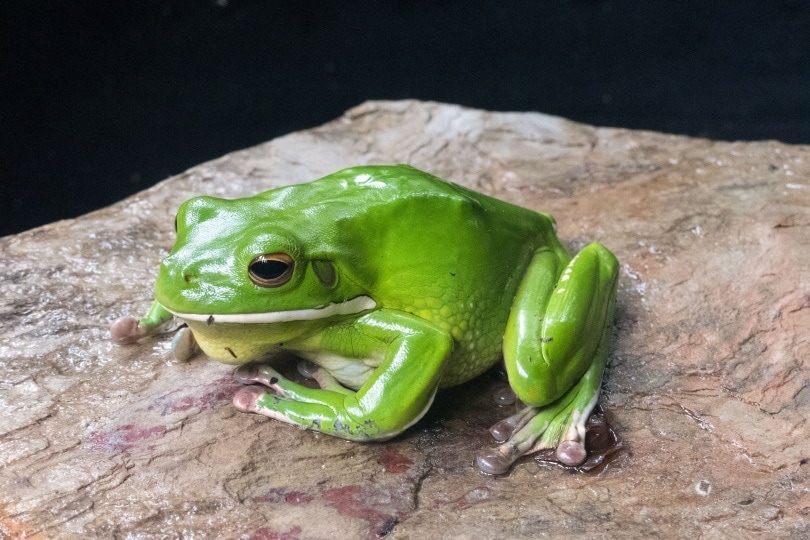
| Scientific name: | Litoria infrafrenata |
| Size: | 3 – 5 inches long |
The White-Lipped Tree Frog is native to Australia and New Guinea. They are one of the largest tree species in the world. They’re bright green with a long white stripe running down each side and need a lot of space to climb in their enclosure. You’ll need a large tank to keep this frog, but their beautiful appearance makes them popular pets. However, the White-Lipped Tree Frog is not as hardy as others, so pay careful attention to their diet, habitat, and health.
12. Waxy Monkey Frog
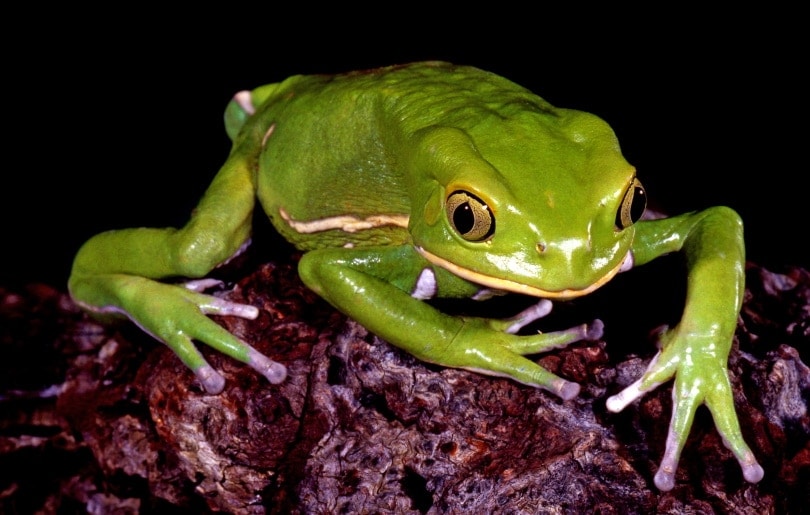
| Scientific name: | Phyllomedusa sauvagei |
| Size: | 2 – 3 inches |
The Waxy Monkey Frog is a bright green species native to South America. They are found climbing in the Amazon rainforest and need vertical space in their enclosure. These frogs are named for the waxy coating on their skin that keeps them moist. They don’t like being handled but are fun to observe because of their ability to climb, including up the glass sides of a tank! Waxy Monkey Frogs need a warm, humid environment but are generally easy to care for, making them a good choice for beginners.
13. American Green Tree Frog
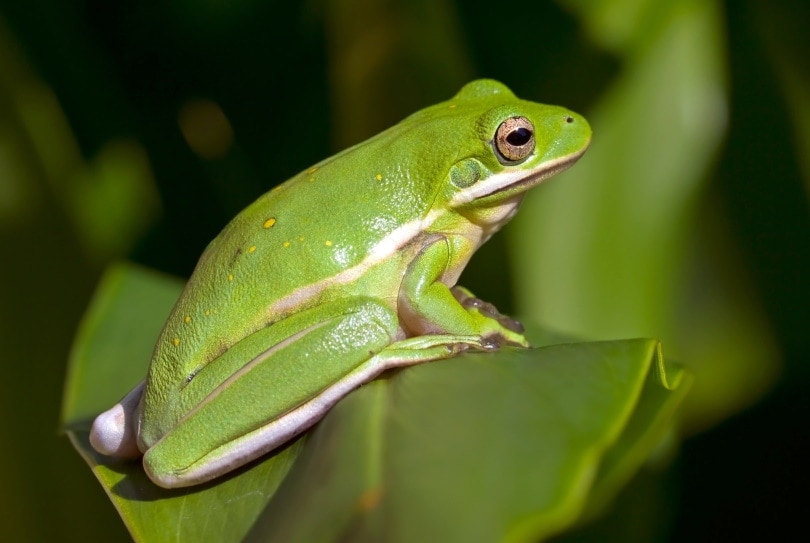
| Scientific name: | Hyla cinerea |
| Size: | 1.25 – 2.25 inches long |
The American Green Tree Frog is common in warm, humid climates in the southeastern and central U.S. states. They are green, usually with a white or yellow stripe along each side. This species is typically found in trees near water but is often spotted near human dwellings at night, feeding on the insects drawn to outdoor lights. The American Green Tree Frog adapts well to life as a pet, but you should stick to purchasing captive-bred specimens. They don’t like being handled but are easy to care for and don’t need a large enclosure.
14. Chubby Frog

| Scientific name: | Kaloula pulchra |
| Size: | 2.5 – 3 inches |
Also called the Asian Painted Bullfrog or Banded Bullfrog, this species is native to southern Asia. Chubby Frogs are short, round amphibians, and they’re primarily brown with yellow to pale orange bands. This species adapts very well to captivity and doesn’t require much space or care. They are tolerant of a broader range of temperatures than many pet frogs. Wild and captive Chubby Frogs reproduce frequently, which keeps the population stable and provides plenty of this species for the pet trade.
15. Northern Leopard Frog
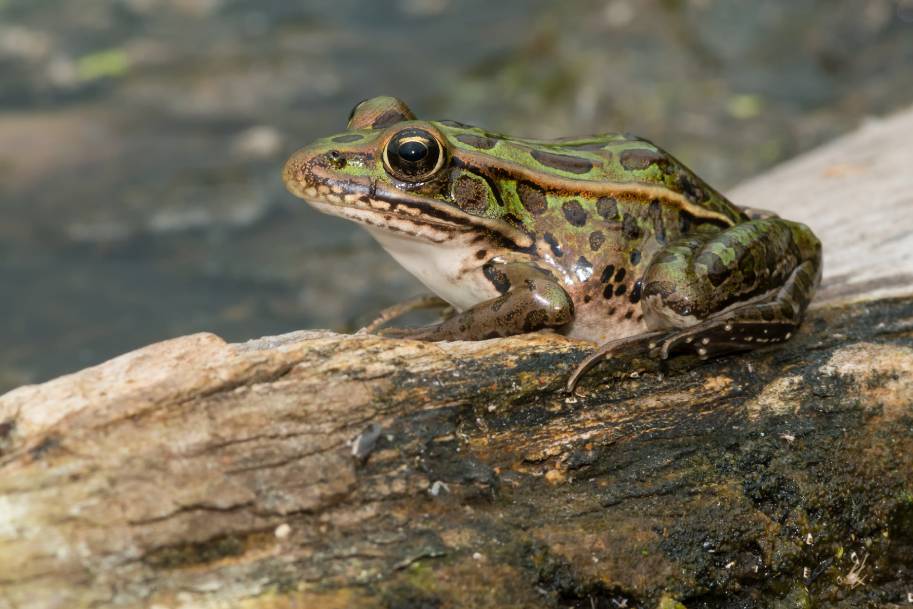
| Scientific name: | Lithobates pipiens |
| Size: | 4.5 inches long |
Northern Leopard Frogs are found in Canada and northern and western U.S. states. Their color varies based on their habitat, with bright green to brown bodies and darker spots. They typically live along the edges of water sources like creeks and ponds. Northern Leopard Frogs are easy to keep as pets and fun to observe. However, they don’t like being handled. They’re adaptable and hardy and a good choice for inexperienced owners.
16. Desert Rain Frog
| Scientific name: | Breviceps macrops |
| Size: | 1.6 – 2.4 inches long |
The Desert Rain Frog is a small, burrowing species that is easy to care for. They’re typically nocturnal in the wild to keep from drying out in the scorching desert heat. Their enclosure will need a deep, moist substrate to burrow and stay moist. Other than this specific habitat requirement, these frogs are a good choice for beginners. Look for captive-bred Desert Rain Frogs because wild populations are vulnerable to habitat loss.
17. Golden Mantella

| Scientific name: | Mantella aurantiaca |
| Size: | 1 inch long |
The tiny Golden Mantella Frog is native to Madagascar. Wild populations are critically endangered, so purchase only a captive-bred frog as a pet. These frogs are yellow, orange, or red with sticky feet. Like Poison Dart Frogs, they secrete a toxic substance from their skin as protection. Golden Mantellas can be kept in groups in a terrarium environment. They should not be handled and are better suited for more experienced frog keepers.
18. Pig Frog

| Scientific name: | Rana grylio |
| Size: | 3.35 – 6.5 inches long |
Pig Frogs are an aquatic species found in Florida, Georgia, and South Carolina. They are a type of Bullfrog with a gray-green or brown color. Their name comes from the sound of their vocalization, which is similar to a pig grunting. These large frogs spend most of their time in the water but also need land access in their enclosure. Because of their size and need for a water habitat, you’ll need extra space to keep a Pig Frog as a pet.

Conclusion
Many of these 18 types of pet frogs are suitable for beginners, but it’s still important to ensure you’re familiar with the care and habitat they’ll need. Some pet frogs are more adaptable than others, but they’ll be happier and more comfortable in the ideal environment. Remember that some of the larger frogs on this list can easily live 10 years or more with proper care. Be prepared for a long-term commitment before you choose one of these frogs as a pet.
Featured Image Credit to: jamjoh, Pixabay
